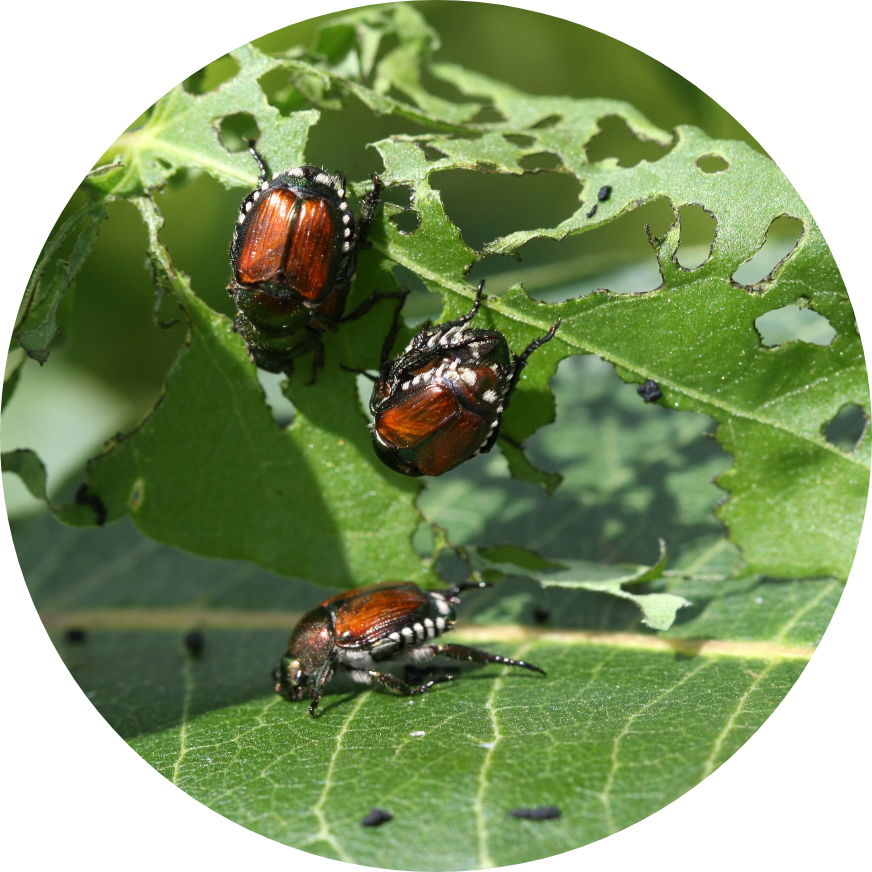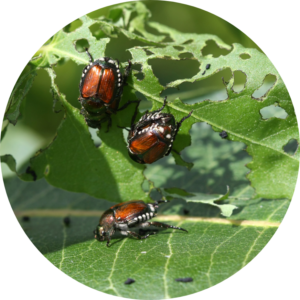Japanese Beetles

The Japanese beetle is a pest that is both destructive and difficult to control. First spotted on American soil in 1916, the beetle has managed to flourish here, largely due to the absence of its natural predators. The insect eats the soft plant material between a leaf’s veins, leaving only skeletal remains behind. The beetle larvae stay underground during the winter and spring months, typically emerging around late June through August.
Controlling and countering the effects of Japanese beetles is a challenge, although there are multiple options available. One of the best ways to combat the pest is to target them while they’re still in the larval stage of development. At that stage, the beetles are highly susceptible to milky spore disease. The USDA developed this control method, which can now be purchased as a powder and applied to ground areas where larvae are developing. It is not an immediate process, however, and may take three to five years to establish good population control.
Spraying the beetles with insecticide is also a common practice that has proven to be successful, while soil and trunk injections have also produced excellent results. Once they reach their adult stage, handpicking the beetles is another option, especially if the population in the area is low. They move slowly and can be easily captured. Doing this early before their numbers grow can make a difference, as they release a pheromone that attracts other beetles to their location.
Pheromone traps are available for Japanese beetles, but their effectiveness in actually trapping the pests is hotly debated, with critics arguing that the devices only help attract greater numbers.

